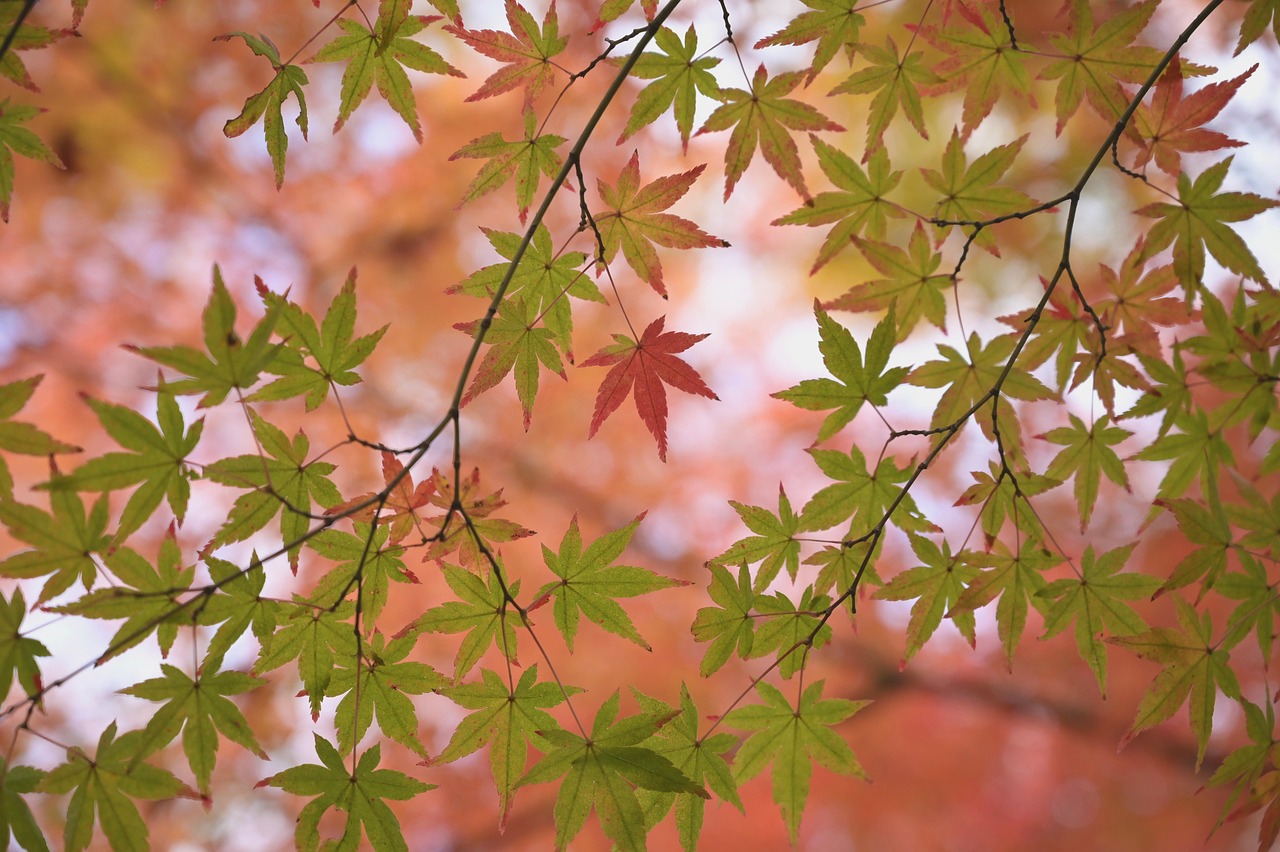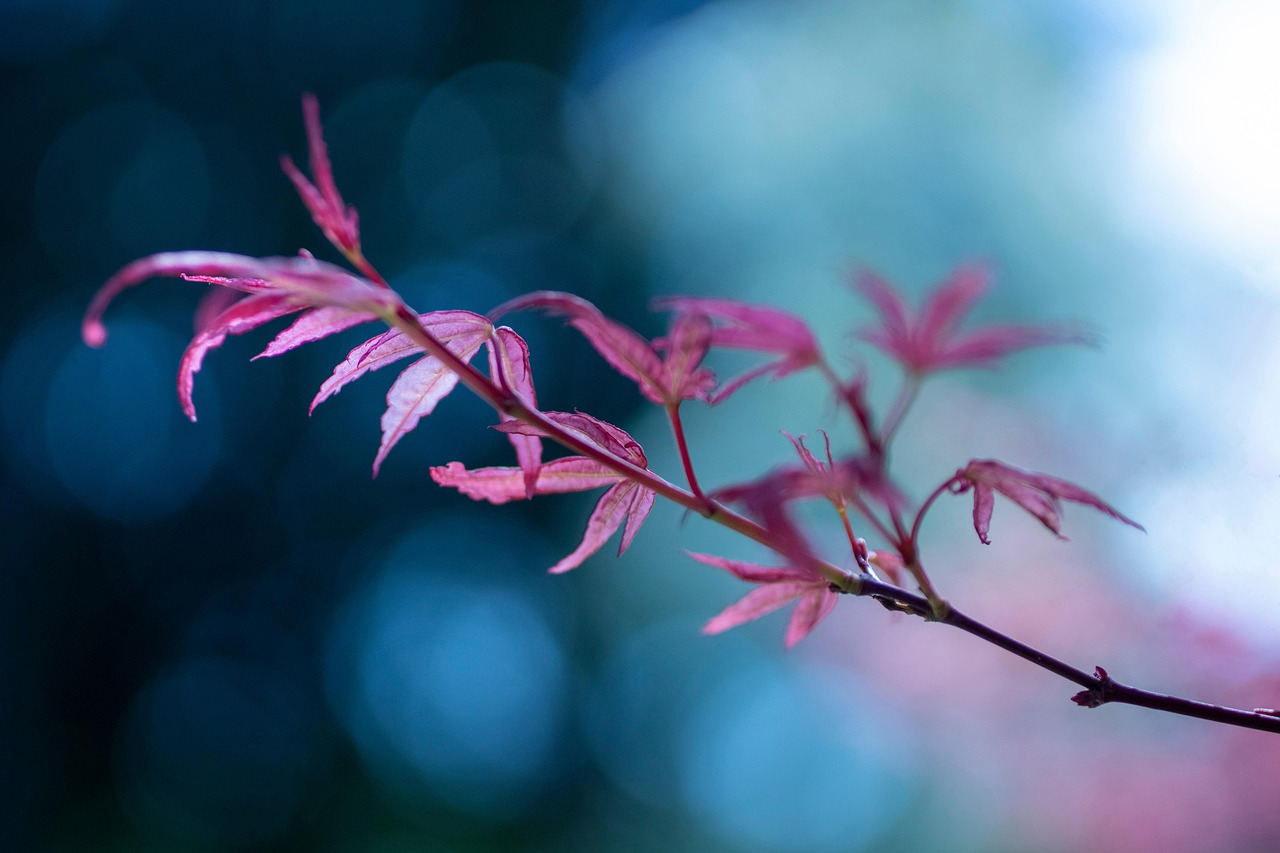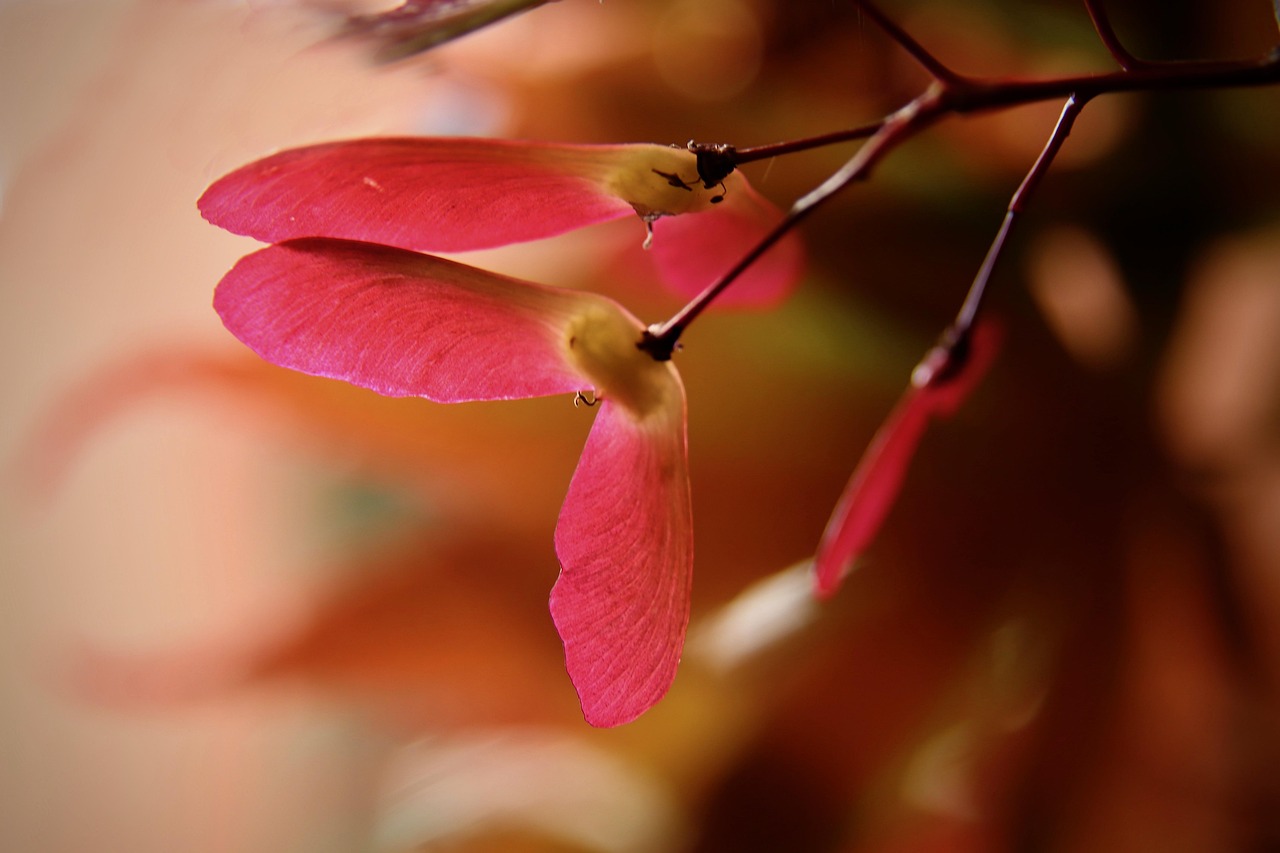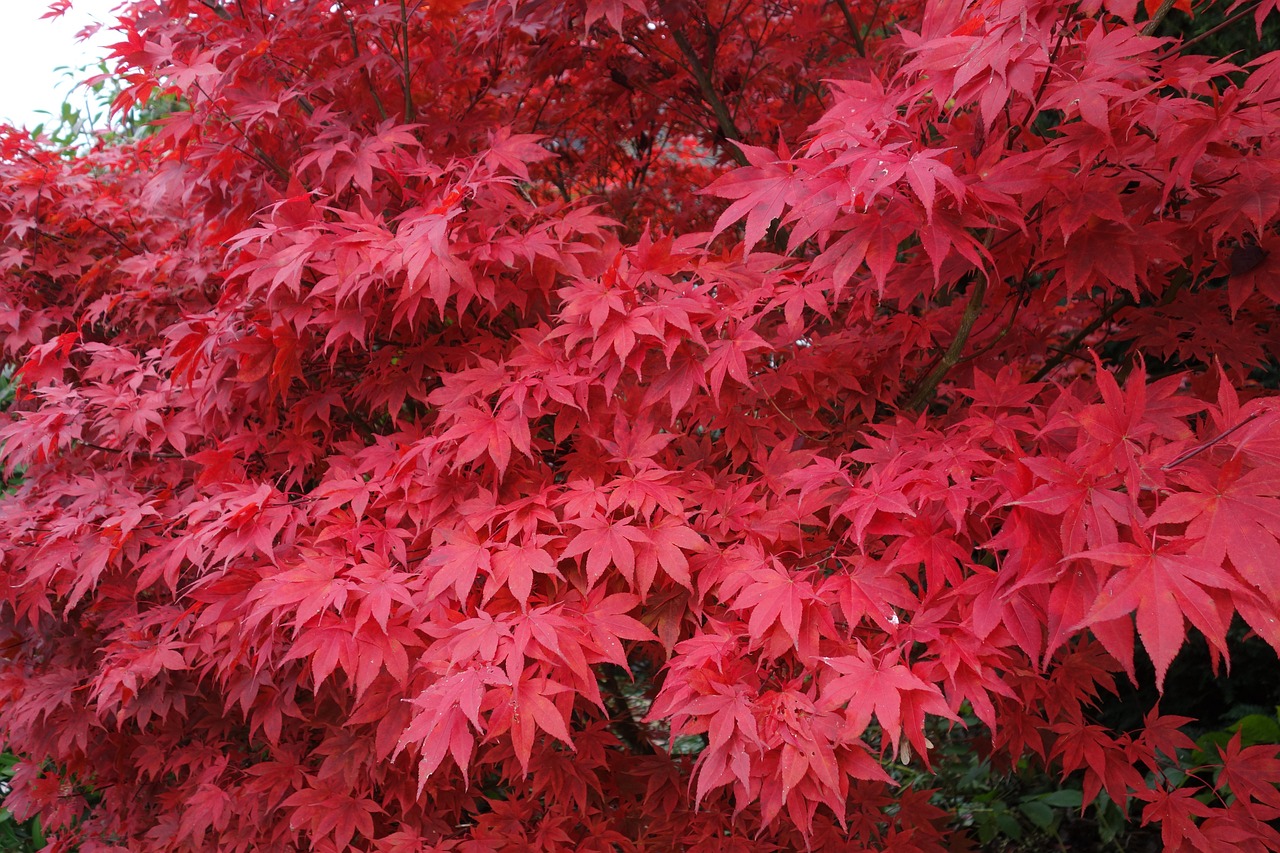The Japanese maple tree typically has a moderate growth rate, averaging between 1 to 2 feet per year. However, the exact rate can vary based on factors such as the tree’s variety, growing conditions, and care provided.
Understanding Japanese Maple Trees
Japanese maple trees, known scientifically as Acer palmatum, are beloved for their stunning foliage and graceful shapes. They are native to Japan, Korea, and China, and have been cultivated for centuries. These trees come in various shapes and sizes, with over 300 cultivars available. Each variety showcases unique leaf shapes, colors, and growth habits.

The appeal of Japanese maples lies not only in their aesthetic beauty but also in their adaptability to different garden environments. They thrive in USDA hardiness zones 5 through 8, making them suitable for a wide range of climates. Their leaves exhibit a stunning array of colors throughout the seasons, transitioning from vibrant reds and purples in spring to deep greens in summer and fiery oranges and yellows in fall.
Factors Influencing Growth Rate
Several factors can influence the growth rate of Japanese maple trees. Understanding these factors can help gardeners achieve the best possible results when cultivating these beautiful trees.
- Variety: Different cultivars of Japanese maples have varying growth rates. Some, like the ‘Bloodgood’, tend to grow faster than others, such as ‘Shishigashira’, which is more compact.
- Soil Quality: Well-draining soil rich in organic matter promotes healthy growth. Poor soil can stunt the tree’s development.
- Watering: Consistent moisture is essential. Both drought and overwatering can negatively affect growth rates.
- Sunlight: Japanese maples prefer partial shade. Too much direct sunlight can lead to leaf scorch, while too little can hinder growth.
- Fertilization: Providing the right nutrients at the correct times can enhance growth. A balanced fertilizer during the growing season is beneficial.
Growth Stages of Japanese Maple Trees
Japanese maple trees go through several distinct growth stages in their life cycle. Understanding these stages can help gardeners provide appropriate care at each phase.

| Growth Stage | Description | Average Growth Rate |
|---|---|---|
| Seedling | The initial stage after germination, where seedlings develop their first true leaves. | 0.5 to 1 foot per year |
| Younger Tree | This stage sees more vigorous growth as the tree establishes itself. | 1 to 2 feet per year |
| Mature Tree | The tree reaches its full size and continues to grow slowly. | 0.5 to 1 foot per year |
During the seedling stage, care is crucial as young trees are more vulnerable to environmental stressors. Proper watering and protection from harsh sunlight can significantly enhance survival rates. As the tree enters the younger stage, it begins to thrive with optimal care. This is when gardeners should focus on consistent watering, mulching, and light fertilization to promote healthy growth.
Once established, mature Japanese maples tend to grow more slowly. Their growth rate stabilizes as they focus on developing a robust root system and producing vibrant foliage. Even during this stage, proper care remains essential for maintaining the tree’s health and appearance.
Seasonal Growth Patterns
The growth patterns of Japanese maple trees can vary with the seasons. Understanding these patterns helps gardeners anticipate their needs throughout the year.

- Spring: New leaves emerge with vivid colors, and the tree experiences its most significant growth spurt.
- Summer: Growth slows as the tree focuses on maintaining leaf health and hydration.
- Fall: Leaves change color dramatically and drop as temperatures cool.
- Winter: The tree enters dormancy, conserving energy until spring.
Recognizing these seasonal changes allows gardeners to provide tailored care that meets the tree’s needs at each stage of its life cycle. By understanding how growth rates fluctuate with environmental conditions, you can ensure your Japanese maple thrives beautifully in your landscape.
Optimal Growing Conditions for Japanese Maple Trees
To achieve vibrant foliage and strong growth rates, it is essential to create optimal growing conditions for Japanese maple trees. These trees thrive when provided with the right environment, soil, and care. Understanding these conditions can help gardeners cultivate healthy and colorful specimens.
Soil Requirements
The type of soil used for planting Japanese maples significantly impacts their growth. They prefer well-draining soil that retains moisture without becoming waterlogged. Here are some key characteristics to consider:

- pH Level: Japanese maples thrive in slightly acidic to neutral soil with a pH range of 5.5 to 7.0.
- Organic Matter: Incorporating organic matter, such as compost, enhances soil structure and fertility.
- Drainage: Ensure that the planting area has good drainage to prevent root rot.
Sunlight Exposure
Sunlight plays a crucial role in the growth of Japanese maple trees. While they can tolerate some direct sunlight, they generally prefer partial shade. Here are some guidelines regarding sunlight exposure:
- Morning Sun: Exposure to morning sunlight is beneficial, as it warms the tree and helps dry dew, reducing the risk of fungal diseases.
- Avoiding Harsh Afternoon Sun: In hotter climates, too much afternoon sun can scorch the leaves. Providing some shade during this time can help maintain leaf health.
- Filtered Light: Areas with dappled light or filtered shade from taller trees can be ideal for Japanese maples.
Watering Practices
Proper watering is vital for the health of Japanese maple trees. They prefer consistently moist soil but can be sensitive to both overwatering and underwatering. Follow these watering practices:
- Frequency: Water the tree deeply once a week during dry spells. Adjust frequency based on rainfall and temperature.
- Mulching: Apply a layer of organic mulch around the base to retain moisture and regulate soil temperature.
- Avoiding Wet Feet: Ensure that the roots do not sit in water, as this can lead to root rot.
Pest and Disease Management
Japanese maples can be susceptible to various pests and diseases. Regular monitoring and preventive measures are essential to maintain their health and vibrant appearance. Here are common issues to watch for:
Pests
- Aphids: These small insects suck sap from leaves, causing curling and discoloration. Use insecticidal soap or natural predators like ladybugs for control.
- Scale Insects: Scale can cause yellowing leaves and stunted growth. Treat with horticultural oil or remove them by hand.
- Spider Mites: These pests thrive in dry conditions and can create webbing on the leaves. Regular misting can help deter them.
Diseases
- Leaf Spot: Fungal infection that causes dark spots on leaves. Remove affected leaves and ensure proper air circulation.
- Powdery Mildew: A fungal disease that appears as a white powder on leaves. Improve air circulation and avoid overhead watering.
- Root Rot: Caused by overwatering, leading to mushy roots. Ensure proper drainage to prevent this issue.
Caring for Your Japanese Maple Tree
Caring for Japanese maple trees involves regular maintenance practices that support healthy growth and vibrant foliage. Here are some essential care tips:
Pruning Techniques
Pruning is an important aspect of maintaining the shape and health of Japanese maples. Proper pruning encourages new growth and removes any dead or diseased branches. Consider these tips:
- Timing: Prune in late winter or early spring before new growth begins.
- Tools: Use clean, sharp tools to make clean cuts that promote healing.
- Aim for Structure: Focus on removing crossing branches and thinning out crowded areas to improve airflow.
Nutrient Management
Nutrients play a vital role in promoting healthy growth and vibrant colors in Japanese maples. Regular fertilization can enhance their overall well-being. Here are some guidelines for nutrient management:
- Selecting Fertilizer: Use a balanced, slow-release fertilizer during the growing season.
- Avoid Over-Fertilization: Too much fertilizer can lead to excessive leaf growth at the expense of root health.
- Testing Soil: Conduct soil tests to determine nutrient levels and amend as needed.
By providing the right conditions and care, gardeners can enjoy the stunning foliage and graceful presence of Japanese maple trees in their landscapes.
Common Varieties of Japanese Maple Trees
Japanese maples are celebrated for their diverse varieties, each offering unique characteristics in terms of growth rate, foliage color, and shape. Understanding these varieties can help gardeners choose the best type for their landscape. Below are some popular cultivars of Japanese maple trees.
Popular Cultivars
- Bloodgood: This variety is well-known for its deep red foliage that holds color well throughout the summer. Bloodgood typically grows between 15 to 20 feet tall and is a favorite for its vibrant appearance.
- Shishigashira: This compact variety features unique, crinkled leaves that turn vibrant shades of green in spring and transition to yellow and orange in fall. It generally grows to about 6 to 10 feet tall.
- Crimson Queen: A weeping variety with cascading branches, Crimson Queen has delicate, lace-like leaves that are bright red in spring and summer. It typically reaches a height of 4 to 6 feet.
- Sango Kaku: Also known as the coral bark maple, this cultivar is appreciated for its striking red stems in winter. It grows to about 15 to 20 feet tall and features green leaves that turn yellow in the fall.
- Acer palmatum ‘Butterfly’: This unique cultivar has variegated leaves with white margins and green centers. It grows to about 6 to 8 feet tall and is known for its eye-catching appearance.
Growth Rate Comparison Among Varieties
The growth rate of Japanese maple trees can vary significantly among different cultivars. Understanding these differences is important for gardeners who wish to achieve specific landscape effects. Below is a table summarizing the growth rates of various Japanese maple varieties.
| Variety | Average Height at Maturity | Average Growth Rate (per year) |
|---|---|---|
| Bloodgood | 15-20 feet | 1-2 feet |
| Shishigashira | 6-10 feet | 1 foot |
| Crimson Queen | 4-6 feet | 1-2 feet |
| Sango Kaku | 15-20 feet | 1-2 feet |
| Butterfly | 6-8 feet | 1 foot |
Environmental Stressors Impacting Growth Rates
Japanese maple trees can be sensitive to environmental stressors, which can hinder their growth rates and overall health. Understanding these factors is essential for optimal tree care.
Temperature Extremes
Japanese maples prefer moderate temperatures. Extreme heat or cold can stress the trees and affect growth rates. To mitigate temperature-related stress:
- Provide Shade: In hotter climates, planting Japanese maples in areas with afternoon shade can help protect them from extreme heat.
- Winter Protection: In colder regions, wrapping the base of the tree with burlap can provide insulation against harsh winter winds.
Drought Conditions
Drought can severely impact the growth rate of Japanese maples, particularly during their early years. Here are ways to manage water stress:
- Irrigation Systems: Installing a drip irrigation system can ensure consistent moisture without over-saturating the soil.
- Mulching: A layer of mulch around the base can help retain soil moisture and reduce competition from weeds.
Pest Infestation
Pests can quickly become a significant issue if not addressed promptly. Regular inspections of the tree can help identify problems before they escalate. Here are some prevention tips:
- Monitoring: Check foliage regularly for signs of pests, such as discoloration or webbing.
- Encouraging Beneficial Insects: Attracting natural predators like ladybugs can help control aphid populations.
The Role of Foliage Color in Growth and Health
The vibrant colors of Japanese maple leaves are not just aesthetically pleasing; they also indicate the tree’s health and growth rate. Foliage color can be influenced by several factors:
Sunlight Exposure and Leaf Color
The amount of sunlight a Japanese maple receives plays a significant role in determining leaf color. Here’s how it works:
- Bright Sunlight: In full sun, certain varieties may produce more vibrant colors but may also risk leaf scorch if not adequately watered.
- Dappled Light: Many cultivars thrive in partial shade, where they can develop their full color potential without stress.
Nutrient Levels and Foliage Color
Nutrient deficiencies can also affect leaf color. For instance:
- Nitrogen Deficiency: This can cause yellowing leaves and stunted growth.
- Iron Deficiency: Results in interveinal chlorosis, where leaf tissue turns yellow while veins remain green.
Maintaining proper nutrient levels through soil testing and appropriate fertilization will support both growth rates and vibrant foliage in Japanese maple trees.
Long-Term Care for Japanese Maple Trees
As Japanese maple trees mature, long-term care becomes increasingly important. Sustaining their health and vibrancy requires ongoing attention to their growing conditions, pest management, and general upkeep. Here are additional considerations for the long-term care of these trees.
Seasonal Maintenance Tasks
Regular seasonal maintenance helps ensure that Japanese maples remain healthy and visually appealing. Here are some tasks to incorporate into your gardening routine:
- Spring: Inspect for winter damage and prune any dead or diseased branches. Fertilize with a balanced slow-release fertilizer to promote new growth.
- Summer: Monitor watering needs closely, especially during hot, dry spells. Check for pests and treat as necessary.
- Fall: Rake fallen leaves to prevent fungal diseases and prepare the tree for winter. Consider applying mulch to insulate roots during colder months.
- Winter: Protect the tree from harsh winds and extreme cold by wrapping the trunk or placing burlap barriers around its base.
Understanding Growth Patterns Over Time
As Japanese maples mature, their growth patterns evolve significantly. Initially, younger trees may exhibit rapid growth; however, as they reach maturity, growth slows down. This gradual transition is normal and can be attributed to the tree focusing energy on strengthening its root system and developing a fuller canopy.
Gardeners should be aware that mature Japanese maples may require less frequent pruning and fertilization compared to younger trees, as their growth stabilizes. Monitoring overall health and watching for signs of stress will help maintain their beauty over the years.
Creating a Cohesive Landscape
Japanese maple trees can serve as stunning focal points in any garden or landscape. To enhance their beauty and integrate them into your outdoor space, consider the following design strategies:
- Companion Planting: Pair Japanese maples with shade-loving plants such as hostas or ferns to create a lush understory that complements the tree’s foliage.
- Hardscaping Elements: Incorporate pathways, benches, or decorative stones around the tree to create inviting areas for relaxation and viewing.
- Seasonal Highlights: Choose plants that provide seasonal interest, such as spring-flowering bulbs or autumn-blooming aster, to enhance the beauty of your Japanese maple throughout the year.
Final Thoughts
Japanese maple trees are not only cherished for their stunning and colorful foliage but also for their ability to adapt to various landscapes. Understanding their growth rates, preferred conditions, and maintenance requirements empowers gardeners to cultivate these beautiful specimens effectively. The combination of proper care, suitable varieties, and thoughtful landscape design allows these trees to thrive and bring joy through every season.
As you nurture your Japanese maple, remember that each tree has its unique personality and growth pattern. With patience and dedication, you can create a vibrant environment where these trees flourish, showcasing their breathtaking colors for years to come.
In conclusion, investing time in learning about Japanese maples enhances your gardening experience. Whether you are a seasoned gardener or a newcomer, these trees offer both beauty and a sense of tranquility in any outdoor space. By combining appropriate care practices with an appreciation for their diverse varieties, you can enjoy the timeless allure of Japanese maple trees.
